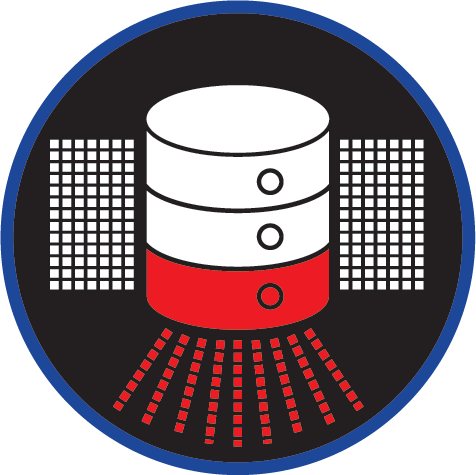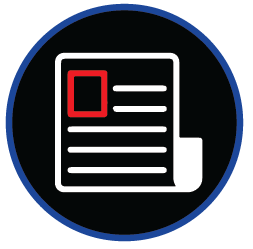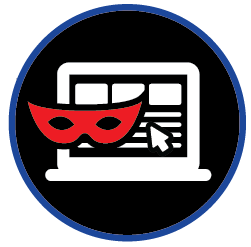
Data Leak Susceptibility
RECLAIM CONTROL: Eliminate the "Pre-Crisis Blind Spot" that Threatens Your Reputation and Board Mandate
You have invested heavily in robust internal security controls and Data Security Posture Management (DSPM). Yet, the critical risks that trigger catastrophic public crises and regulatory penalties—exposed cloud buckets, leaked compute credentials, and hidden third-party weaknesses—exist entirely outside your firewall. This "Pre-Crisis Blind Spot" is what the adversary sees, and it represents your most significant exposure to an unexpected, high-impact organizational crisis.
The ThreatNG Data Leak Susceptibility Security Rating provides the objective, unauthenticated External Data Leak Posture Management (DLPM) score you need. This consequence-driven security rating translates chaotic external flaws into a single, decisive A-F grade, measuring your organization's probability of suffering a disclosure-worthy event and restoring your professional confidence.

Foresight, Not Firefighting: Turn Regulatory Anxiety into Unassailable Confidence
The increasing sophistication of external attacks, coupled with stringent global regulations such as GDPR, has intensified CISOs' personal liability for compliance failures. The Data Leak Susceptibility Rating provides predictive crisis identification, serving as an early warning system that flags the exact external preconditions (such as exposed PII or critical credentials) that could escalate into a significant, reputation-damaging event.
By providing an objective, continuous A-F risk score mapped to these key GRC frameworks, ThreatNG enables you to confidently justify proactive security investment to the board, proving due diligence and transforming reactive anxiety into executive control.
Neutralize the Highest-Probability Attack Vectors: Exposed Cloud Buckets and Leaked Credentials
Data leaks overwhelmingly originate from the two most straightforward and common external failures: misconfigured cloud services and compromised access credentials. Relying on internal tools means you are blind to what the attacker is actively seeking.
Our solution delivers the unauthenticated adversary view by continuously searching for and scoring these high-impact technical precursors:
Exposed Open Cloud Buckets: Detection of externally accessible AWS, Azure, and Google Cloud storage services that are gateways to massive data theft.
Compromised Compute Credentials (DarCache Rupture): Identification of high-privilege access details, API keys, and login pairs found exposed on the Dark Web, which are the highest-probability vectors for initial breach.
By prioritizing remediation of these specific, high-severity flaws, you achieve immediate control over your external attack surface.

End the Third-Party Trust Deficit: Continuous, Objective Supply Chain Assurance
98% of organizations are connected to a vendor that has experienced a breach in the last 2 years, demonstrating the failure of static, questionnaire-based Third-Party Risk Management (TPRM). Your reputation is only as strong as your weakest vendor.
The Data Leak Susceptibility Security Rating provides the objective, continuous A-F validation of every vendor's external security posture by specifically measuring external digital risks that can lead to data loss. This includes :
Externally Identifiable SaaS Applications: Pinpointing unmonitored or vulnerable third-party applications and services in your ecosystem that may handle or expose your data.
Compromised Credentials: Assessing whether leaked access details associated with your third parties or supply chain are exposed on the Dark Web, creating a high-probability initial access vector.
Cloud Exposure: Flagging externally exposed open cloud buckets (e.g., AWS, Azure) associated with your partners that could lead to mass data theft and compliance failure.
This objective intelligence provides the leverage you need to demand remediation and ensure that your global supply chain is not a silent, hidden entry point into your organization.
ThreatNG Data Leak Susceptibility Score: Severity Levels Explained
The ThreatNG Data Leak Susceptibility Score utilizes a letter grading system (A-F) to communicate the severity of your organization's vulnerability to data leaks. This grading system aligns with the ThreatNG Digital Presence Triad, providing a clear picture of the risk based on three key factors:
Feasibility
This assesses how easy it would be for attackers to exploit weaknesses and cause a data leak. Grade A indicates a highly secure environment with robust data security measures, limited cloud storage exposure, and minimal presence of sensitive data on the dark web. Conversely, Grade F signifies a vulnerable environment with weak access controls, extensive cloud storage usage without proper configuration, and a high likelihood of sensitive data appearing on the dark web.
Believability
This evaluates the likelihood of attackers targeting your organization or its third parties to steal data. A low score (A) suggests a low chance of being targeted, often due to strong data security practices and limited storage of valuable data. A high score (F) indicates a high likelihood of being targeted due to the type of data you store (e.g., financial information, intellectual property), the industries you operate in (e.g., healthcare, finance), or a history of past data breaches.
Impact
This considers the potential consequences of a successful data leak. Grade A signifies minimal potential damage, such as a leak of non-sensitive data with minimal financial or reputational impact. Grade F indicates a scenario with severe consequences, such as a large-scale breach of sensitive data (e.g., customer records, financial information) leading to economic losses, regulatory fines, reputational damage, and even identity theft for affected individuals.
How the Grades Translate to Severity
A (Low Severity)
Your organization has strong data security measures, a low attacker interest, and minimal potential impact if a data leak occurs
B (Moderate Severity)
While your organization might have weaknesses in data security or cloud storage configurations, attacker interest is still considered low, or the potential impact is manageable.
C (Medium Severity)
This indicates a balance between the ease of exploiting vulnerabilities (Feasibility), the likelihood of being targeted (Believability), and the potential consequences (Impact). Remediating these moderate risks is recommended to strengthen your data security posture.
D (High Severity)
Your organization shows vulnerabilities in data security or cloud storage configurations that could be exploited with moderate attacker interest or could lead to significant consequences if a data leak occurs. Urgent action is needed to address these vulnerabilities and implement more robust data security measures.
F (Critical Severity)
This signifies the highest risk scenario. Your organization has critical weaknesses in data security and cloud storage configurations, is highly likely to be targeted by attackers, and could suffer severe consequences if a data leak occurs. Immediate remediation is crucial to prevent attackers from exploiting these vulnerabilities.
The ThreatNG Advantage
Considering all three factors (Feasibility, Believability, and Impact), the ThreatNG score provides more than a simple data security audit. It offers practical benefits, prioritizing data leak risks based on real-world scenarios. This allows you to focus resources on the areas with the most significant potential for data exposure. This focus on the Digital Presence Triad helps organizations achieve optimal data security outcomes by first addressing the most critical data leak vulnerabilities.

Unveiling Data Leak Risks: Proactive Insights with ThreatNG
Data breaches are a constant threat, and traditional security solutions often have blind spots. This is where ThreatNG comes in. It doesn't replace your existing security measures; it enhances them. The ThreatNG Data Leak Susceptibility Score breaks the mold by offering a wealth of actionable insights fueled by a powerful combination of data and intelligence. It empowers organizations to manage data security risks and prevent costly breaches proactively. Here's how ThreatNG delivers superior value:
Actionable Insights and Data-Driven Objectivity
ThreatNG goes beyond simply identifying potential data leaks. The score analyzes your organization, third-party vendors, and the supply chain by leveraging External Attack Surface Management (EASM) and Digital Risk Protection (DRP) capabilities. This comprehensive view, bolstered by vast intelligence repositories, paints an objective picture of your data leak susceptibility. With this data-driven approach, you gain actionable insights that pinpoint specific weaknesses in Cloud and SaaS Exposure (including sanctioned, unsanctioned, and impersonated services, as well as open cloud buckets), Compromised Credentials, Sentiment and Financials (specifically SEC Form 8-K filings), and Vulnerabilities. This lets you prioritize remediation efforts and make informed decisions to strengthen your data security posture.
Continuous Monitoring and Improvement
ThreatNG isn't a one-time assessment. Its continuous monitoring capabilities provide ongoing insights into your data security posture. This allows you to track progress on addressing vulnerabilities, identify new data exposure risks as they emerge, and measure the effectiveness of your data security measures over time. It empowers a proactive security approach, enabling you to continuously adapt and improve your cloud security practices and employee training programs to safeguard your valuable data.
Comparison and Benchmarking
The ThreatNG score allows for comparison and benchmarking against industry standards or your historical data. This comparative analysis helps you understand how your data leak susceptibility stacks up against competitors and measures the effectiveness of your data security efforts over time.
Actionable Recommendations
The score doesn't just highlight problems; it provides clear, actionable recommendations for addressing data leak vulnerabilities. These recommendations are tailored to the specific details of your data security posture, cloud storage configurations, and dark web presence. It empowers you to prioritize resources and focus on the areas that will significantly reduce your susceptibility to data leaks.
Transparency Through External Validation
ThreatNG's scoring system is clear and transparent. Because it is substantiated by the results of EASM, DRP, and extensive intelligence repositories, including Cloud and SaaS Exposure analysis, Dark Web Presence investigations, and Domain Intelligence, the score verifies and objectively assesses your data leak susceptibility. This transparency fosters trust and empowers stakeholders to confidently make informed decisions to safeguard your organization's data and prevent costly breaches.

Unveiling Your Organization's Weaknesses: A Spectrum of ThreatNG Security Ratings
The ThreatNG Data Leak Susceptibility Score is a powerful tool, but it's just one piece of the puzzle within ThreatNG's comprehensive digital risk assessment suite. While this specific score hones in on the vulnerability of data breaches, ThreatNG offers a broader range of Susceptibility and Exposure ratings that paint a holistic picture of your organization's digital security posture, third-party vendors, and entire supply chain.
Here's why a comprehensive approach matters:
Interconnected Threats
Security vulnerabilities in one area can have cascading effects across your digital ecosystem. A compromised third-party vendor, for instance, could expose your data or become a launchpad for other attacks. ThreatNG's suite of ratings helps you identify and address these interconnected threats.
Prioritized Action
You gain a prioritized view of your security risks by assessing various vulnerabilities. It allows you to focus resources on the areas with the most significant potential impact, maximizing your security investments.
Supply Chain Security
Today's businesses rely on complex supply chains. ThreatNG's assessments extend beyond your organization, providing visibility into the security posture of your vendors and partners and creating a more secure digital ecosystem.
ThreatNG's Spectrum of Security Ratings:
BEC & Phishing Susceptibility
Assesses the risk of falling victim to Business Email Compromise and phishing attacks.
Subdomain Takeover Susceptibility
Identifies weaknesses in subdomain configurations that could allow attackers to take control.
Mobile App Exposure
Assesses the risk of sensitive data leaks by identifying exposed credentials, API keys, and other vulnerabilities within mobile apps that could lead to unauthorized access and data exfiltration.
Brand Damage Susceptibility
Evaluate the likelihood of negative brand impacts due to security incidents, financial violations, or social responsibility concerns.
Breach & Ransomware Susceptibility
Assesses the likelihood of falling victim to ransomware attacks, considering exposed ports, known vulnerabilities, and dark web presence
Cyber Risk Exposure
This section provides a broad view of external attack surface vulnerabilities, encompassing the technology stack, cloud environments, and code exposure.
ESG Exposure
Evaluate the organization's environmental, social, and governance practices to identify potential security risks.
Supply Chain & Third Party Exposure
Analyzes the security posture of your vendors and partners, highlighting potential vulnerabilities within your supply chain.
Web Application Hijacking Susceptibility
Analyzes web applications for vulnerabilities attackers could exploit.
Security for Everyone: Proactive Threat Management
ThreatNG empowers organizations of all sizes, third-party vendors, and supply chain partners to assess and mitigate digital risks proactively. This collective effort creates a more secure digital ecosystem for everyone.
By leveraging ThreatNG's comprehensive suite of Susceptibility and Exposure ratings, you can clearly understand your vulnerabilities and their potential impact on your organization. This empowers you to make informed decisions, prioritize resources, and implement adequate security measures to safeguard your valuable assets across your digital landscape.
Data Leak Susceptibility Score Frequently Asked Questions (FAQs)
Understanding the External Data Leak Susceptibility Rating
-
The ThreatNG Data Leak Susceptibility (DLS) Security Rating is a quantifiable, executive-level metric (rated A-F, where A is best and F is worst) that measures the likelihood of an external, unauthenticated data exposure or leakage event.
It converts the complex, fragmented data of your external attack surface into a single, unambiguous grade. The DLS rating provides objective evidence of the organization’s resilience against common external initial access vectors that lead directly to material data loss. This allows security leaders to communicate risk effectively to the Board and audit committees, shifting the conversation from technical spending to strategic risk control.
-
Your actual external data leak exposure is defined by what an adversary can see and exploit without authenticated access. External discovery is essential because the most catastrophic data leaks often stem from simple, externally visible misconfigurations, such as exposed open cloud buckets or leaked compute credentials, which bypass traditional internal controls. If an attacker can see the data-leak precursor, your internal tools have a critical blind spot, and the rating provides the objective truth about this exposure.
-
Internal DSPM focuses on identifying and classifying sensitive data risks inside your environment. This rating addresses the critical security gap where internal efforts fail: the unauthenticated external view. External discovery is essential because the most catastrophic data leaks often stem from simple, externally visible misconfigurations, such as exposed open cloud buckets or leaked compute credentials, which bypass traditional internal controls. If an attacker can see the data leak precursor, your internal tools have a critical blind spot.
-
The rating is engineered to focus on the highest-probability external vectors leading to data breaches and material consequences :
Cloud Exposure: Detection of externally exposed open cloud buckets (e.g., AWS, Microsoft Azure, Google Cloud Platform).
Compromised Credentials (DarCache Rupture): Identification of leaked access details or compute credentials available on the Dark Web.
Externally Identifiable SaaS Applications: Pinpointing unmonitored or vulnerable third-party applications and vendor technologies, directly addressing supply chain risk.
Executive Accountability and Crisis Mitigation
-
The Data Leak Susceptibility Rating serves as an immediate "Pre-8K Warning System" by directly monitoring risk factors correlated with mandatory public disclosure, such as SEC 8-K Filings. A critical drop in your rating allows you to remediate the material security event before it escalates into a public crisis. This capability transforms the score into a predictive indicator of crisis.
-
In the modern regulatory landscape, CISOs face heightened accountability and personal liability for compliance failures or data breaches. The Data Leak Susceptibility Rating provides two primary benefits:
Predictive Crisis Identification: It directly monitors risk factors correlated with mandatory public disclosure, such as SEC 8-K Filings. A critical drop in your rating serves as an immediate "Pre-8K Warning System," allowing you to remediate the material security event before it escalates into a public crisis.
Evidence of Due Diligence: It translates complex technical risk into objective A-F business terms, providing verifiable, continuous external evidence of your due diligence to the Board and regulators, boosting your professional confidence.
-
CISOs must align security spending with the organization's risk profile. The universally understood A-F rating translates complex attack-vector data into clear business-risk terms, helping the board understand the likelihood of sustaining a breach. A low rating ('D' or 'F') provides clear, objective evidence that justifies accelerated budget growth for proactive remediation, helping you avoid massive, reactive spending after a damaging incident or breach. By linking the score to breach probability, you can align security ROI with tangible, risk-based outcomes.
Addressing Key Pain Points and Use Cases
-
The digital supply chain is a significant source of risk, with 98% of organizations connected to a vendor who has had a breach in the last two years. Static, questionnaire-based TPRM often fails because it provides a snapshot, not continuous monitoring. The ThreatNG rating provides:
Continuous External Monitoring: It automatically monitors and scores the external security posture of your entire vendor ecosystem, including detecting externally identifiable SaaS applications, and provides real-time alerts when their risk level changes.
Objective Leverage: The objective A-F score allows your team to instantly assess the cyber risk of any third-party and demand faster remediation from vendors whose exposure threatens your own compliance standing.
-
Continuous monitoring of third-party cloud exposure is achieved by differentiating our unauthenticated external assessment from traditional questionnaire-based TPRM. The Data Leak Susceptibility Rating focuses specifically on two high-consequence vectors :
Cloud Exposure: Automatically detecting externally exposed open cloud buckets (e.g., AWS, Azure) associated with your partners.
Externally Identifiable SaaS Applications: Pinpointing unmonitored or vulnerable third-party applications in your ecosystem, which are frequent sources of data leakage. The continuous nature of the A-F scoring provides real-time alerts when risk levels change so that you can act instantly.
-
The rating is derived from uncovering external digital risks across five critical vectors :
Cloud Exposure: Detection of externally exposed open cloud buckets (e.g., AWS, Microsoft Azure, Google Cloud Platform).
Compromised Credentials (DarCache Rupture): Identification of leaked access details or compute credentials available on the Dark Web.
Externally Identifiable SaaS Applications: Pinpointing unmonitored or vulnerable third-party applications and vendor technologies.
SEC 8-K Filings: Correlating your current external risks with the type of material security event that triggers mandatory SEC disclosure.
Identified Known Vulnerabilities: Integration of intelligence from NVD, KEV, and EPSS down to the subdomain level to prioritize the most exploitable risks.
-
This is not a generic security scorecard. ThreatNG's rating is consequence-driven external intelligence. Unlike systems that focus solely on volume of findings, this rating is engineered to focus on the material business consequences of the findings. By integrating specific financial and regulatory indicators (SEC 8-K risk factors) with technical precursors (exposed cloud buckets), it shifts the focus from passive measurement to predictive crisis identification, enabling you to align security ROI with tangible, risk-based outcomes for the boardroom.
-
Yes. The DLS is explicitly designed to integrate with and strengthen your Governance, Risk, and Compliance (GRC) posture. ThreatNG’s External GRC Assessment capability maps DLS findings—such as exposed assets and critical vulnerabilities—to relevant compliance frameworks.
By adopting DLS, security leaders gain objective, external evidence to validate their adherence to standards, including PCI DSS, HIPAA, GDPR, NIST CSF, and POPIA. This transforms compliance reporting from a periodic burden into a continuous, measurable, and objective statement of external risk control.

Security Ratings Use Cases
ThreatNG is a security rating platform enabling businesses to evaluate and monitor their security posture and that of their third-party vendors. By leveraging our extensive security information database, ThreatNG provides valuable insights into potential vulnerabilities and risk exposure, enabling organizations to take proactive measures to strengthen their security defenses. This section will explore some use cases where ThreatNG's security ratings can help organizations better understand their security posture and mitigate risk.



























